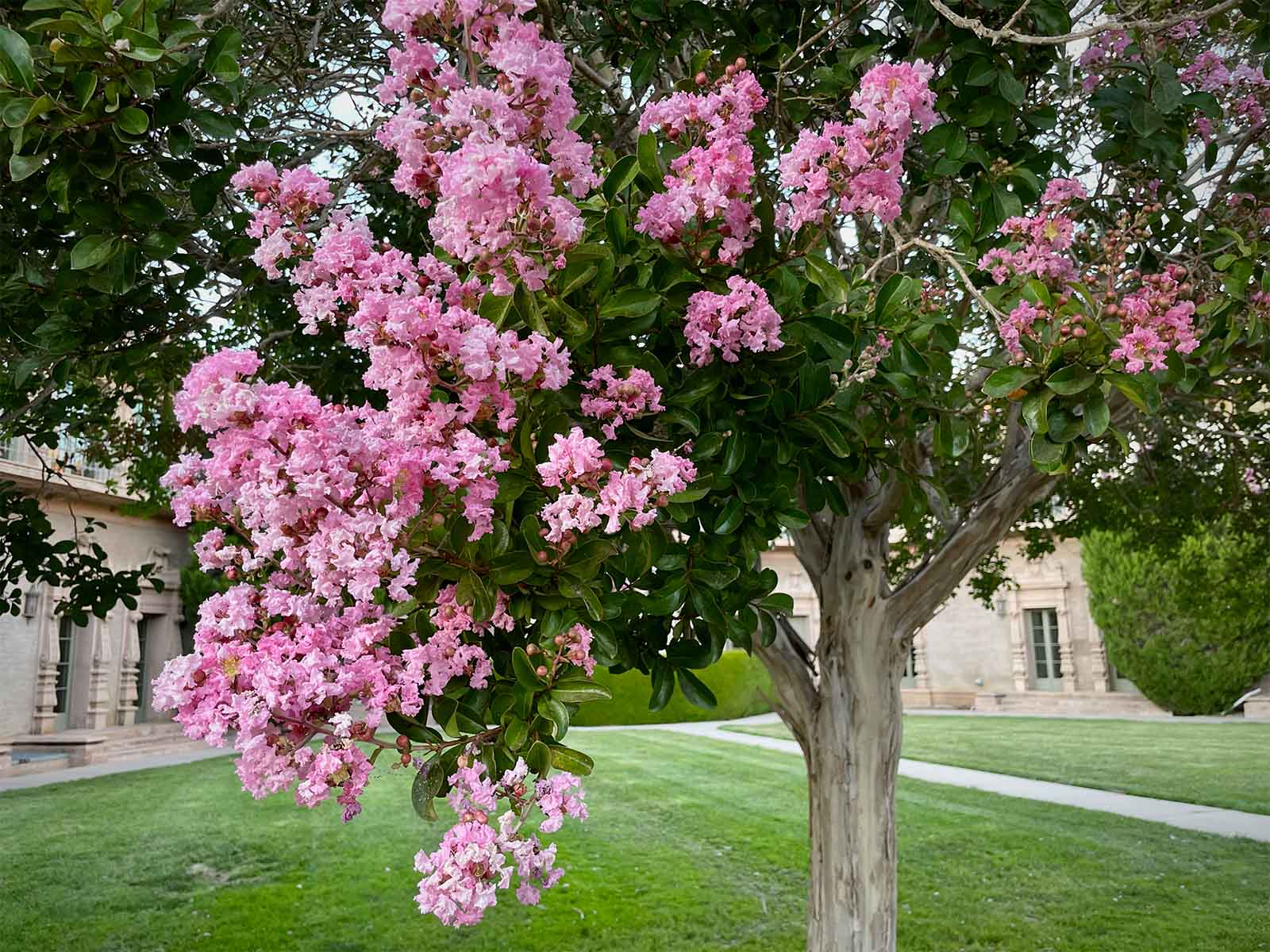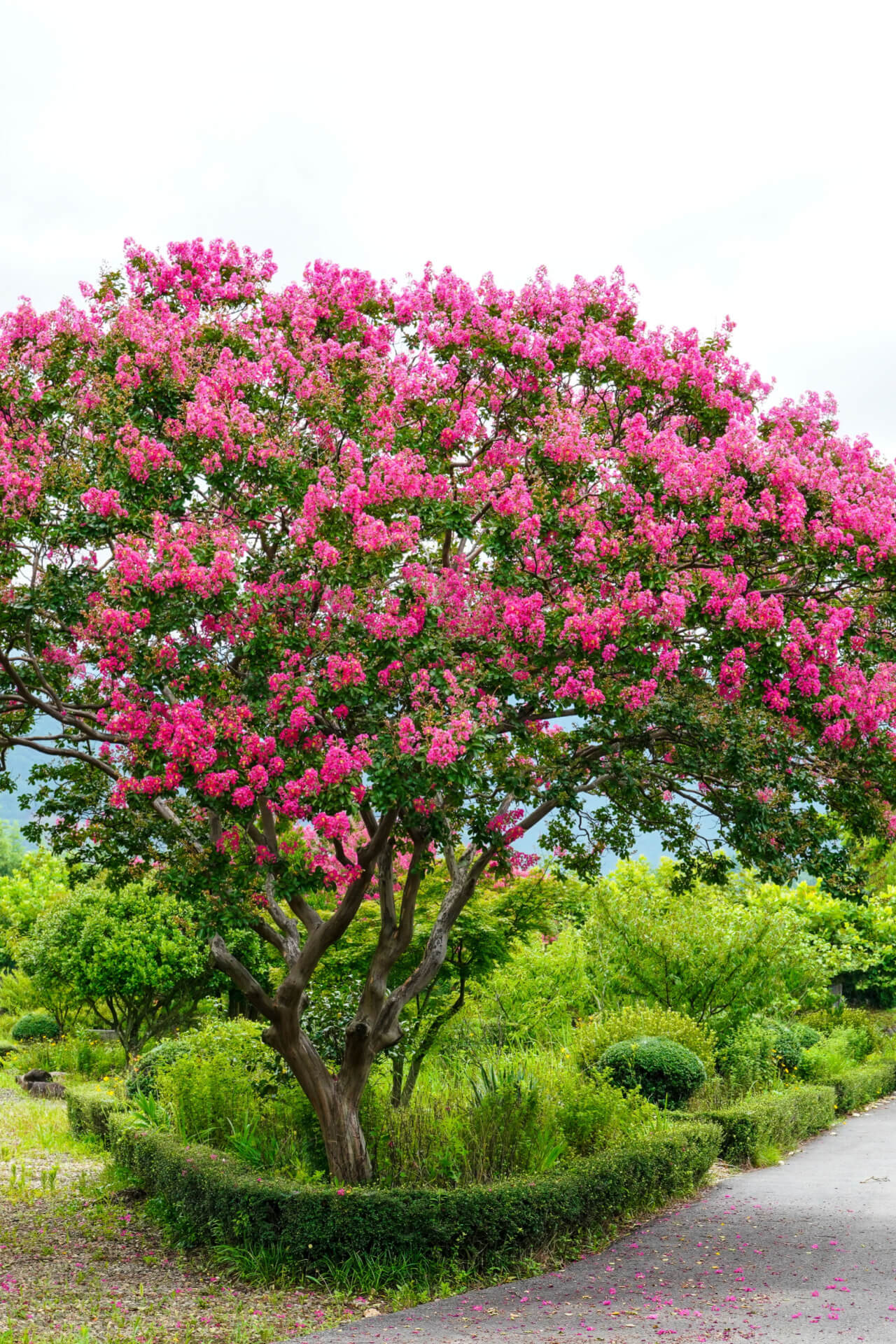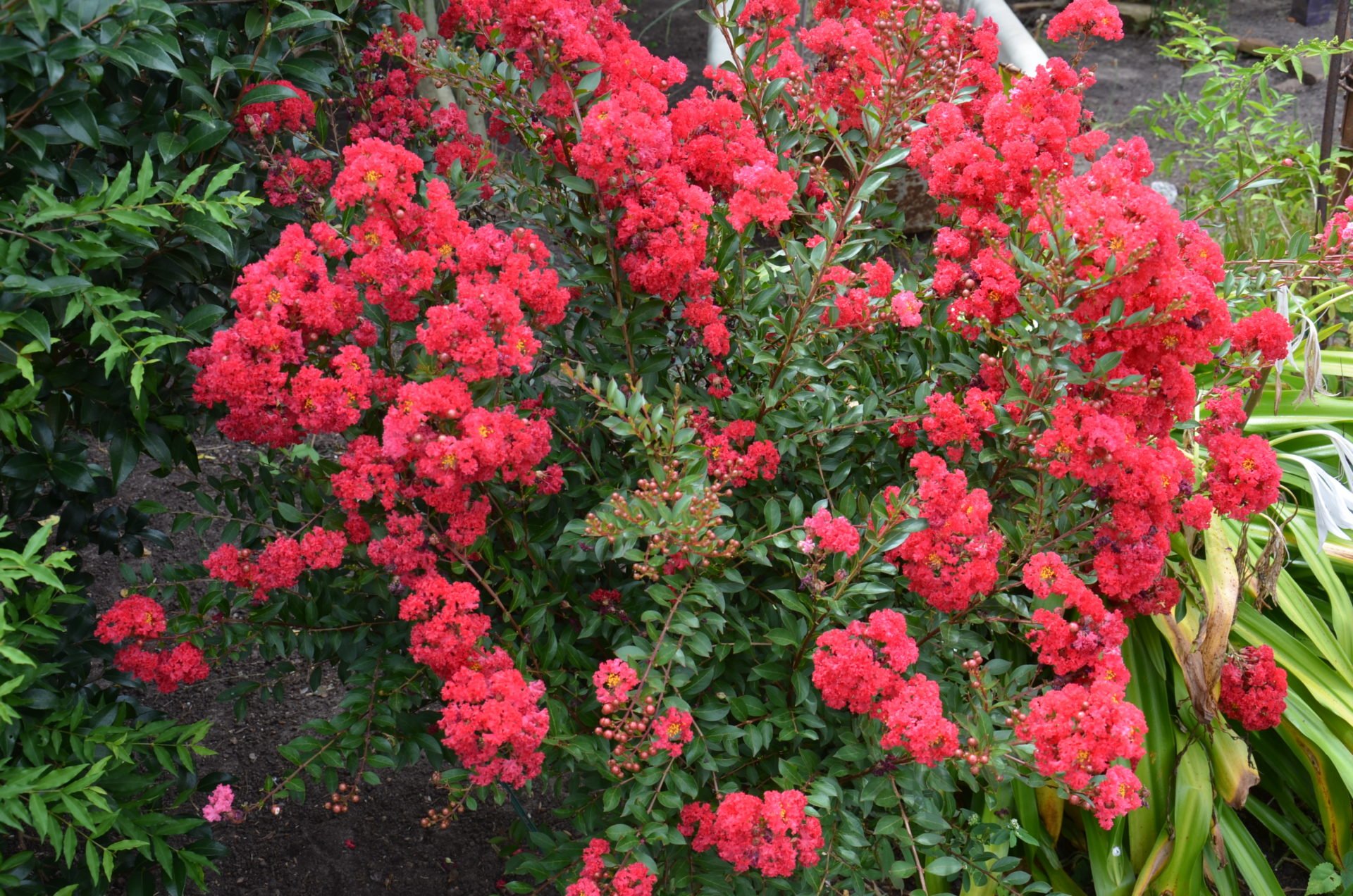Crepe myrtle (Lagerstroemia indica) is a deciduous flowering tree that is prized for its vibrant, colorful blooms and attractive form. Native to China and India, this versatile tree has become a popular choice for gardens and landscapes worldwide. With its stunning appearance, low maintenance requirements, and adaptability to various growing conditions, crepe myrtle is a fantastic addition to any outdoor space.
Key Features of Crepe Myrtle
Blooming Season: Crepe myrtle typically blooms from late spring to early fall, providing a long-lasting display of color.
Planting and Care
Crepe myrtle is a relatively easy tree to grow and care for. Here are some tips for planting and maintaining it:

Planting Location: Choose a sunny location with well-drained soil. Crepe myrtle is tolerant of a variety of soil types but prefers slightly acidic conditions.
Pest and Disease Problems
Crepe myrtle is generally resistant to pests and diseases. However, a few problems may occasionally arise:
Powdery Mildew: This fungal disease can cause white powdery spots on the leaves. Good air circulation and proper watering can help prevent powdery mildew.
Landscape Uses

Crepe myrtle is a versatile tree that can be used in various landscape settings. Here are some popular uses:
Specimen Tree: Crepe myrtle can be planted as a focal point in a garden or yard.
With its stunning blooms, low maintenance requirements, and adaptability to different growing conditions, crepe myrtle is a wonderful addition to any garden or landscape. Whether you are looking for a focal point, a colorful accent, or a low-maintenance tree, crepe myrtle is sure to impress.






:strip_icc()/purple-white-alstroemeria-1bbc41b6-d73f172008a543deabf78626381423fa.jpg?w=200&resize=200,112&ssl=1)
:max_bytes(150000):strip_icc()/grow-maranta-inside-1902647-02-de777eb8e7804c3d86d658cd242583d6.jpg?w=200&resize=200,112&ssl=1)
:max_bytes(150000):strip_icc()/GettyImages-511790642-2000-6fe26923bfb040cab1ebcf930a5933ca.jpg?w=200&resize=200,112&ssl=1)